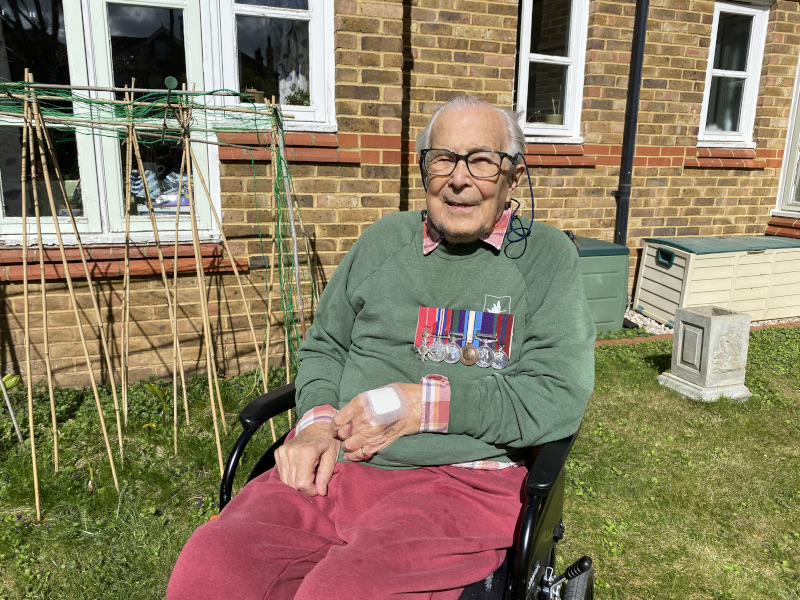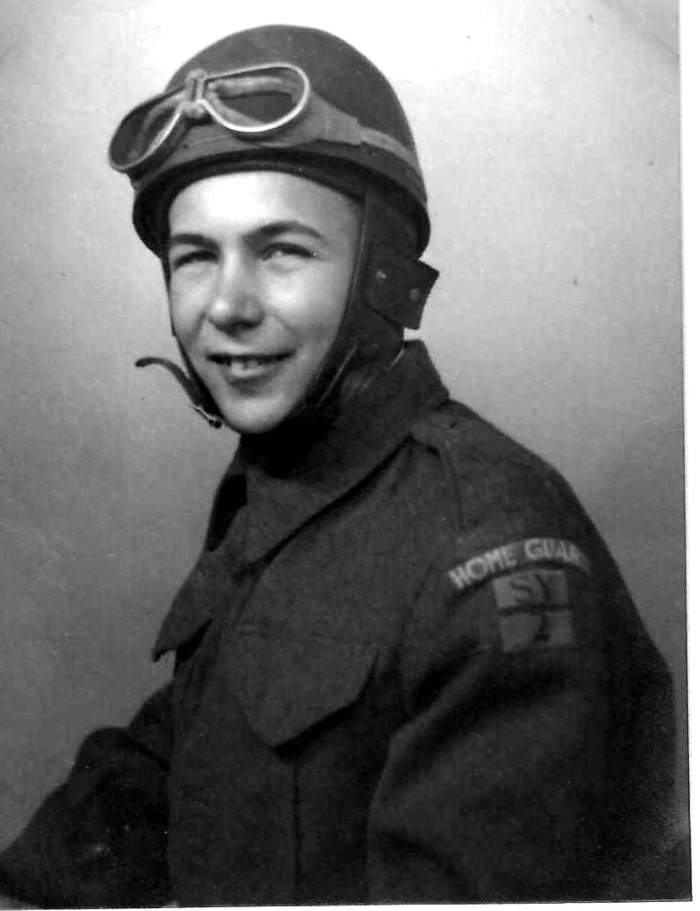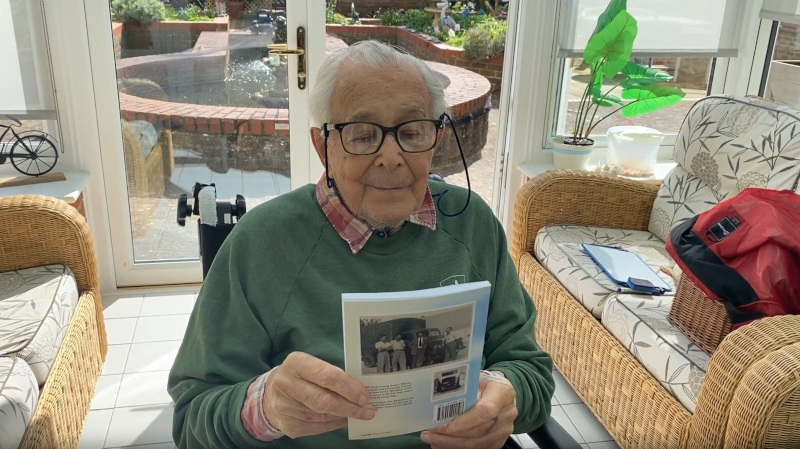WWII stories: "VE Day parties were in every street"

As a teenager during the Second World War, the impact of a fatal bombing at school launched an Army career that lasted more than three decades for one military veteran.
Iain Radford – affectionately known as ‘Major’ – joined the Army at the age of 17 after basic training, heading for a six-month stint at university in the Midlands to be trained as an officer and combat engineer.
Memories of VE Day celebrations remain strong for the 98-year-old, who lives in south west London.
Watch Iain tell his story
“The party was every street,” recalls Iain, who enlisted in February 1944.
“People, just in the streets. We were recruits in the barracks and we were marched to the cathedral.”
“After that we were free for the rest of the day. We went into a pub and everybody was celebrating the end of the war.”
War continued in Pacific
Iain recalls how he stood up and asked the pub-goers to remember troops who remained on overseas missions, including his two older brothers.
Despite the surrender of all German troops in western Europe by 8 May 1945, the war was still raging in the Pacific where Japan, a key German ally, was fighting off a quickly advancing US Army.
“As a result, I never paid for another drink in that pub,” reveals Iain. “I was not sober, but I walked all the way back to the barracks.”

Like many young people his age, Iain was determined to do his bit for the war effort.
He recalls being away at school outside London, with daily reminders of the battles that were being fought.
“During the war, the school was surrounded with ammunition, piles of ammunition every 25 yards,” explains Iain.
“Then, suddenly, it was all taken away to go on the ships to France.
“While I was there, we were bombed. We rolled up our bedding, put it around our shoulders and walked down to the air raid shelters.”
He remembers that after the bombs had been dropped, he heard the question ‘Is the [head] master with you?’ being asked at every shelter.
“The [head] master was not at any of the shelters,” recalls Iain.
“One of the bombs had landed on the [head] master’s lodge. The bomb must have hit him, because we never found any bit of him.”
Commitment to serve
With two brothers already serving overseas in the Army, Iain enlisted for service as soon as he could.
After the war officially ended in Europe in May 1945, the newly-trained Sapper – or combat engineer – went on to serve in India.
A sense of adventure was never far from Iain’s mind and, in 1950, he was granted permission to undertake a two-month road journey from Chatham to Calcutta instead of travelling by troop ship.
Chronicling his quest – along with friend Shaw and brother Jim – in a book titled The Trip, the epic overland journey took in a route through Europe into Türkiye, Iraq, Iran and Afghanistan.

Iain went on to serve in the Army until the 1970s.
His penultimate posting was to the Proof and Experimental Establishment (P&EE) at Shoeburyness, where he was responsible for clearing Maplin Sands in the Thames Estuary of more than 200 years of unexploded ordnance ahead of construction of a third London airport, which was later cancelled.